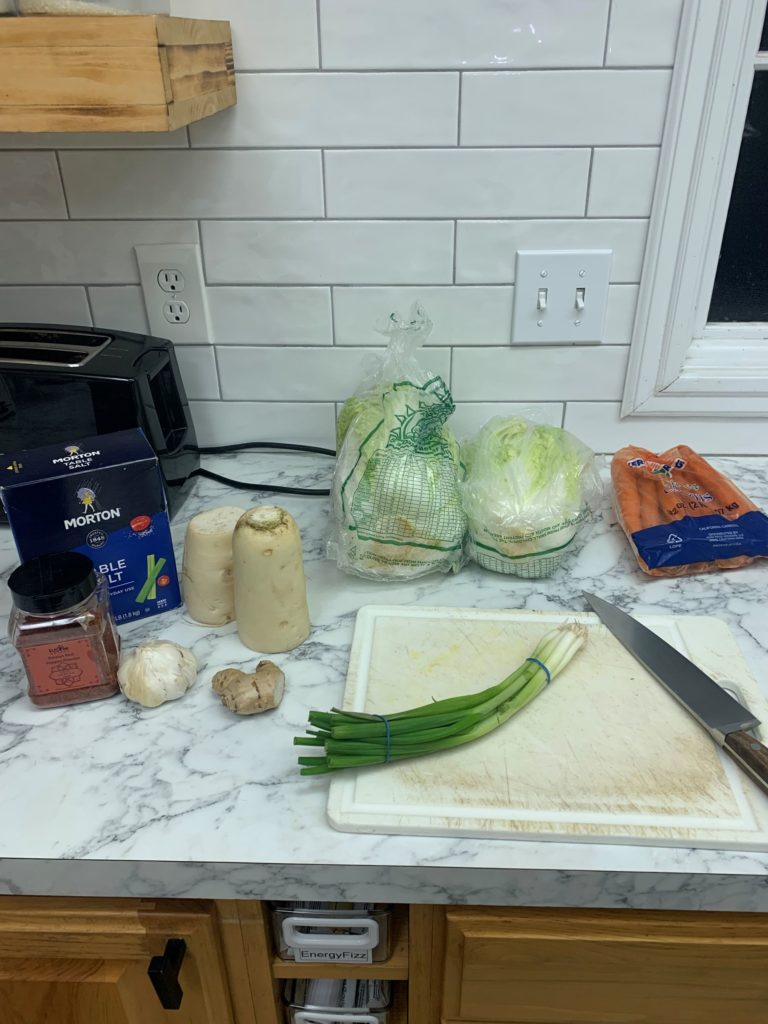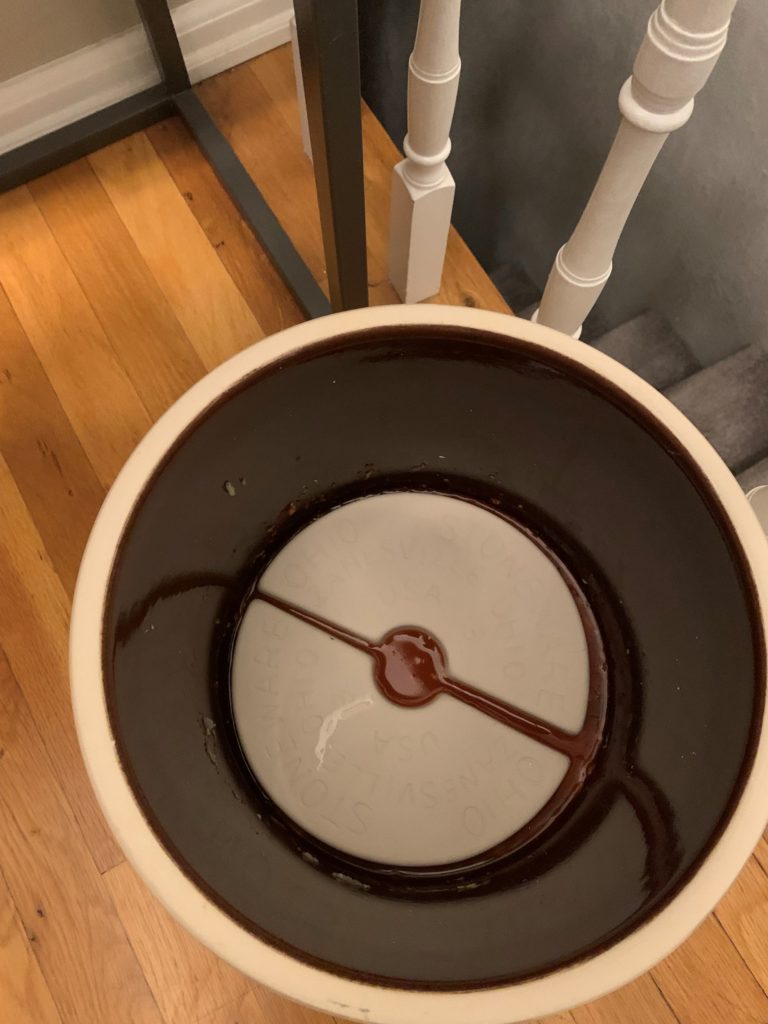This is the inaugural fermentation. I picked Kim Chi because I have a large container of the Korean pepper gochutgaru lying around. My wife loves to buy me spicy things and yet many people do not have the same affinity to spicy things as I do, so I do have a backlog of spicy stuff hanging out.
Lactofermentation is very easy. Keep the stuff in an anaerobic environment and it takes care of itself. To do that, add salt and a weight. The salt brings out the liquid from the vegetables and the weight keeps them under the liquid level (created by adding salt). That is it.
If you want the probiotic lifestyle (that is to say benefits), then you need to keep the ferment raw. Canning or cooking will kill those beneficial microbes. The good news is that it can be served directly from the very container it is made in and as long as the end product stays under water, no harm will ever come. Discard anything that molds, that is not anaerobic anymore.


Sauerkraut by contrast is very simple, cabbage and salt. Kim chi has a few more ingredients but not terrible they are as follows.
- 4#, Napa cabbage
- 1#, Daikon radish
- 2, carrots
- 1 bunch, green onion
- 4 cloves, garlic
- 1 inch ginger
- 1/4 cup, korean pepper
- 4 tablespoons salt
I looked at a number of recipes and it does appear that official kim chi has some sugar and fish sauce as well as a rice flour type gravy. I figure I can add this after the ferment or adjust things later if I choose to so I didn’t add it.
The trick is to layer the cabbage and salt. I have a special tamper that is used to press the salt into the cabbage which helps get the water out quicker. I also used it to mix the different components around as I added them. It is kind of like a tenderizer for meat. It is really not necessary, I have made sauerkraut without it.


Once everything is in good contact, I put the weights in and the lid on. Keep the crock at room temperature while it is fermenting. All that is to do is to wait. You can see on the last picture that there is already a complete layer of liquid. This was only after an hour and a half.
How do you know when it is done? When it tastes to your liking. Expect three days to a week in general. To slow the process, chill.
How will it be stored? It can be served directly out of the crock or it can moved to another container.
How long will it keep? It can easily last over the until the next growing season. Use your eyes and nose as guides
End Your Programming Routine: My three gallon crock is significantly too large for this size batch. So, I plan on moving it into a 1 gallon (or 1/2 gallon or even quart) jar and put in the refrigerator when done. I plan on making a nice batch of pickles later in the spring when cucumbers actually start producing. And I am definitely going to load up with sauerkraut in the late summer. What I am saying is that this is a great size to make a lot of stuff but not as great to store and serve. More experimenting to come.
Recent Comments